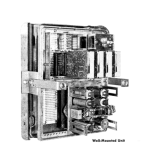The Key Telephone System is becoming as obsolete as landline telephones and is becoming ill relevant like the rotary dial telephones. It’s being replaced not just with “the cloud” and Voice over IP; it’s the overall methodology how VOIP works today. The other factor is technical “professionals” who often trash customers for retaining older ideas and if anyone insists what they want they’ll be gaslighted as “stuck in the past”.
But this type of telephone system was the earliest type of system that had buttons, had the ability to buzz, ring, lock out another line if the other telephone was busy (privacy modes), and other dodads like Music On Hold and paging.
It’s easy from a historical point of view, that plain ol dial sets in offices were tied to PBX systems and multi button telephones were tied to Key Systems. Of course this is prior to the 1970s before these became electronic devices. Earlier key systems were known as “1A” series, followed by “1A1” and “1A2” systems as the years went on, these were originally developed by Western Electric, but was cloned by other vendors.
